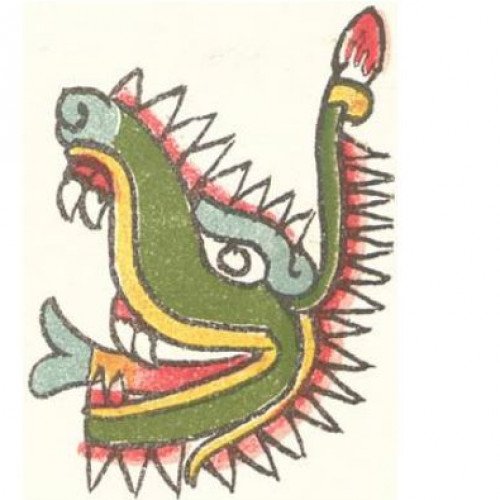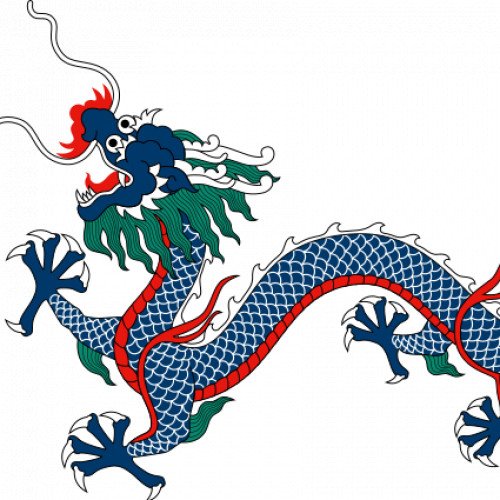Vote on Mythical creatures: Cipactli vs Chinese dragon

Cipactli
Cipactli (Classical Nahuatl: Cipactli "crocodile" or "caiman") was the first day of the Aztec divinatory count of 13 X 20 days (the tonalpohualli) and Cipactonal "Sign of Cipactli" was considered to have been the first diviner. In Aztec cosmology, the crocodile symbolized the earth floating in the primeval waters. According to one Aztec tradition, Teocipactli "Divine Crocodile" was the name of a survivor of the flood who rescued himself in a canoe and again peopled the earth. In the Mixtec Vienna Codex (Codex Vindobonensis Mexicanus I), Crocodile is a day associated with dynastic beginnings.In Aztec mythology, Cipactli was a primeval sea monster, part crocodilian, part fish, and part toad or frog, with indefinite gender. Always hungry, every joint on its body was adorned with an extra mouth. The deity Tezcatlipoca sacrificed a foot when he used it as bait to draw the monster nearer. He and Quetzalcoatl created the earth from its body. Karl A. Taube has noted that among the Formative-period Olmec and the pre-Hispanic Maya peoples, crocodilians were identified with rain-bringing wind, probably because of the widespread belief that wind and rain clouds are “breathed” out of cave openings in the earth. A series of Olmec-style basreliefs from Chalcatzingo in the state of Morelos portrays crocodilians breathing rain clouds from their upturned mouths. Portable green stone Olmec sculptures depict crocodilians in similar positions, indicating that they are probably also breathing.In the Maya tzolk'in, the day Cipactli corresponds to Imix. In the Mayan Popol Vuh, the name of the earthquake demon, Sipakna, apparently derives from Cipactli. Sipakna is the demon Sipak of 20th century Highland Maya oral tradition. In Migian, Cipactli is Quanai. In other versions, Cipactli is called Tlaltecuhtli, a deity referred to as the "earth monster".
Statistics for this Xoptio

Chinese dragon
A Chinese dragon, also known as Long or Lung, is a legendary creature in Chinese mythology, Chinese folklore, and Chinese culture at large. Chinese dragons have many animal-like forms such as turtles and fish, but are most commonly depicted as snake-like with four legs. They traditionally symbolize potent and auspicious powers, particularly control over water, rainfall, typhoons, and floods. The dragon is also a symbol of power, strength, and good luck for people who are worthy of it in East Asian culture. During the days of Imperial China, the Emperor of China usually used the dragon as a symbol of his imperial strength and power. In Chinese culture, excellent and outstanding people are compared to a dragon, while incapable people with no achievements are compared to other, disesteemed creatures, such as a worm. A number of Chinese proverbs and idioms feature references to a dragon, such as "Hoping one's child will become a dragon" (simplified Chinese: 望子成龙; traditional Chinese: 望子成龍; pinyin: wàng zǐ chéng lóng). Affiliated Chinese surnames include 龐 / 庞 (Dragon God, House of Dragon) and 龍 / 龙 (Dragon).